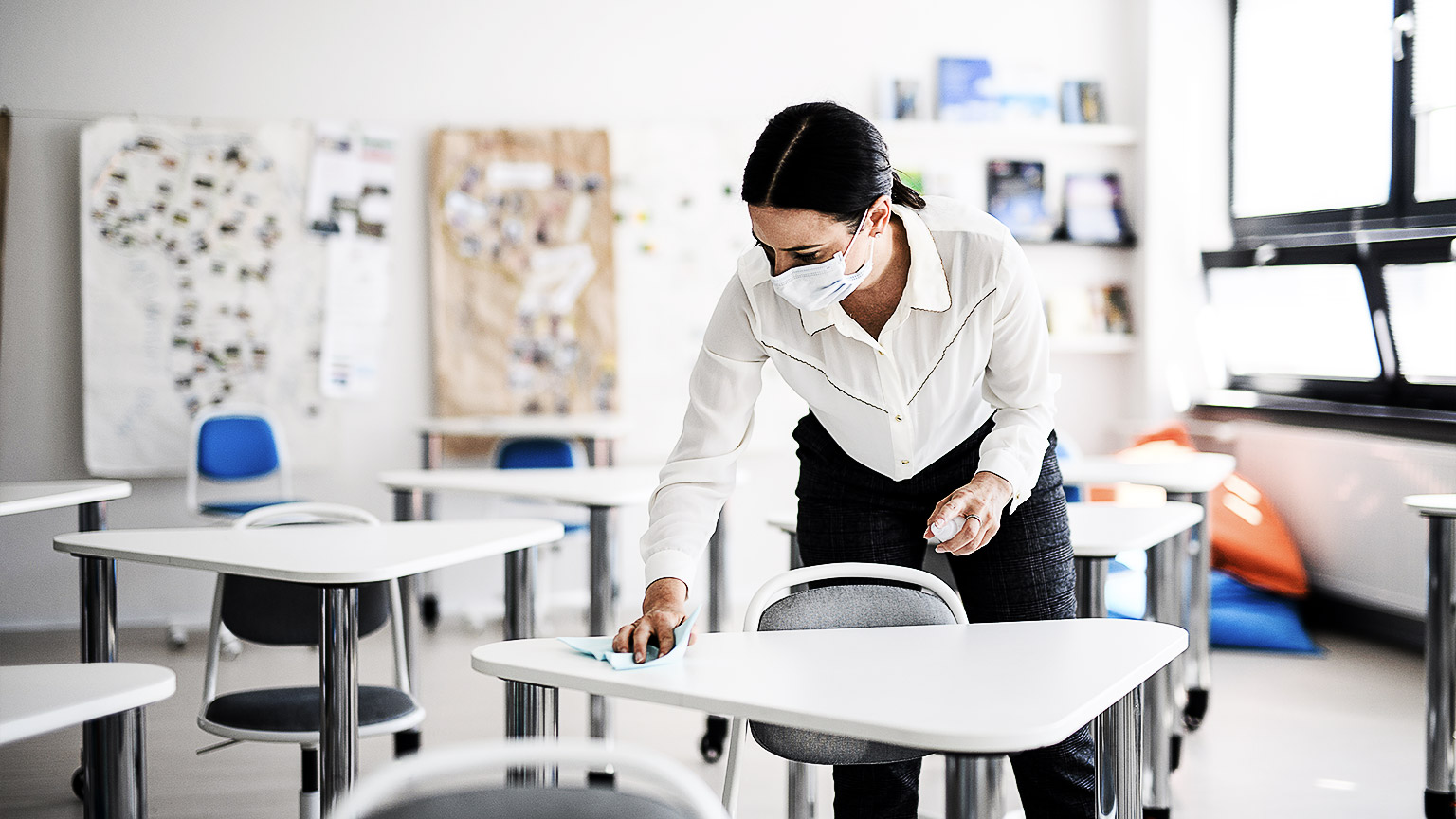There are a number of things you can do to contribute to your workplace being safe and meeting required WHS standards. WHS should be seen as an integral part of your everyday work activities and not something to address for compliance or regulatory reasons. This should be done in a manner that seeks to protect the health and safety of yourself and others. It should also include proactively looking at ways to continually improve safe work practices. In this topic, we will investigate the different types of PPE and your rights and responsibilities with respect to their use, following safe work practices and how you can get involved in shaping WHS at your workplace and how to identify hazards before they cause harm.
By the end of this topic, you will understand:
- How to protect the safety of yourself and others in the workplace
- Different types of PPE and procedures for use
- How workplace inspections can help identify hazards before they cause harm
- How consultation and representation support safe work practices and how you can get involved.
Manual Handling
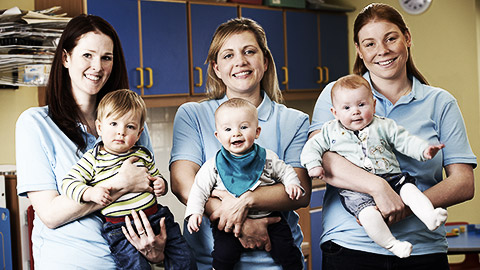
Lifting children in and out of cots and highchairs or on and off the nappy change tables is an example of manual handling.
Manual handling refers to any form of lifting, pushing, pulling, carrying, nursing and, or holding children or objects. Educators routinely undertake a wide range of manual handling tasks in their day-to-day work, and this is a key hazard in early childhood and OSHC settings. The risk of injury increases when manual handling tasks are frequent, repetitious, last a long time and are performed with poor posture or technique.
TIPS: To prevent manual handling injuries:
- Provide manual handling training that encompasses everyday practices, e.g. lifting children and nappy changes.
- Practice safe lifting and carrying.
- Use aids such as trolleys and step ladders.
- Store heavy and awkward items close to where they are needed.
- Use equipment and furniture suitable for adult use, e.g. adult-sized chairs.
This video shows correct manual handling in an early childhood setting, such as lifting tables by two people, or using stairs for changing a child's nappy (instead of lifting up the child).
The following 4-minute video from an educational leader explaining some of the safe manual handling techniques in a childcare centre:
Check out this next video looking at some techniques on how to effectively move and carry objects maintaining safe manual handling.
And lastly, here is an instructional video demonstrating good posture and lifting techniques.
As an educator how can you contribute to Workplace Health and Safety?

At an education and care service staff will be required to engage in a variety of different safety measures to ensure the service is providing a safe and caring environment for children whilst adhering to the Laws and Regulations set out for education and care services.
Contributions may include:
- Completing daily safety sheets and records
- Completing risk assessments and assessing areas of the service
- Completing Emergency drills and rehearsals
- Contributing to the development and implementation of service policies and procedures
- Reviewing of service policies and procedures
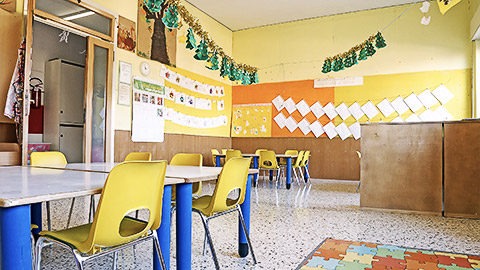
As an early childhood educator, you have a duty to protect the safety of yourself and others in work environments. You should be aware that this requirement not only addresses your primary place of work but also when you are travelling for work or attending another organisation’s facility.
Examples of applying safe work practices include:
- Thinking about what you are doing and the potential consequences
- Following workplace policies and procedures with respect to the performance of your work tasks and incident reporting
- Consulting with other educators about health and safety issues you are not confident about, such as how to use an equipment, whether an equipment is safe enough, etc.
- Using equipment for its intended purpose and in line with operating procedures and instructions. Attend meetings where all staff are shown how to use the equipment appropriately.
- Not doing anything that you do not have the appropriate skills, training or authority to do
- Storing cleaning and other chemicals in appropriate containers and cabinets
- Obtaining help to lift or manoeuvre heavy or bulky items
- Keeping your work area clean and uncluttered
- Examining your work area and how tasks are performed to identify any risks or hazards
- Monitoring your own stress and fatigue levels
- Taking a proactive approach to identifying hazards
The following 5-minute video shows some useful techniques of safe manual handling in an early childhood education and care setting:
Maintain Currency of Practice
A continuous improvement approach to procedures and work tasks is an essential element of safe work practice. There are a number of steps you can take to ensure your practices reflect current legislation, codes of practice and processes within your work area.
These include:
- Attending all WHS training sessions and meetings offered by your organisation
- Subscribing to newsletters, social media channels, emails and RSS feeds of practice leaders within your industry, as well as communicating with peak bodies, unions and your state or territory’s WHS regulator
- Attending networking and industry events
These actions not only enhance your own practice but the knowledge you gain can be used to contribute to safe work policies and practices within your organisation.
Some examples of how to maintain currency with Work Health and Safety practices in early childhood include:
- Reading and following services policies and procedures
- Reading and following the National Law and Regulations
- Signing up to newsletters with ACECQA and your state/ territory Regulatory Authority
- The Guide to the NQF
- Child Care peak bodies like ECA, NOSHA and Family Daycare Association.
Use of Personal Protective Equipment

Some roles require that you use or wear PPE. These requirements will be detailed by your organisation’s policies and procedures, relevant codes of conduct or safety data sheets. Safety data sheets (SDS) contain the name of substances and ingredients, general description of the hazards and detail the requirements for handling hazardous materials and chemicals, such as safe storage, personal protection, direction of use, first aid instructions, emergency procedures and details of the manufacturer or supplier.
You can read more about safety data sheets on Safe Work Australia. Additionally, you can check common chemical’s information here.
Personal protective equipment and clothing refers to anything used or worn to minimise the risk to worker’s health and safety.
Some examples of PPE are:
- Boots
- Ear plugs
- Face masks
- Hazmat suits
- Gloves
- Goggles
- Hard hats
- High visibility clothing
- Respirators
- Safety harnesses
- Safety shoes
- Sunscreen
- Aprons
- Masks
You are required under WHS legislation to wear PPE if your employer provides it to you. This includes:
- Using or wearing PPE in accordance with any information, training or reasonable instruction provided
- Not intentionally misusing or damaging PPE
- Informing your employer of any damage, defect or need to clean or decontaminate any of the PPE if you become aware of it
If the PPE does not fit correctly or is uncomfortable, or you have an adverse reaction to it, you should consult with your manager on how to resolve the problem. If you refuse to wear or use PPE, the business can take disciplinary action against you and can even prosecute you. This can also occur if you intentionally misuse or damage the PPE.
Single-use or disposable PPE must be discarded in line with your organisation’s policies and procedures.
Housekeeping
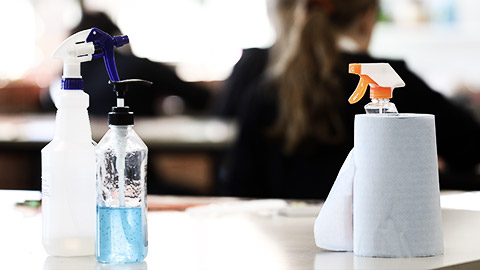
Another way in which you can contribute to a safe and healthy work environment is to follow relevant housekeeping standards. Good housekeeping in any work environment is one way in which you can ensure that hazards and their respective risks can be minimised.
This is particularly relevant in a personal care setting where biological contamination and infection control is of significant concern. Some examples of good housekeeping include:
- Ensuring that procedures regarding the disposal of waste, biological products, consumables (such as sharps) and PPE are followed
- Maintaining sufficient stock levels of consumable products such as PPE
- Keeping work areas clear of clutter and rubbish
- Cleaning up spills immediately
- Keeping emergency exits and pathways clear
- Handling and storing cleaning and other chemicals in line with procedures and codes of practice
- Following procedures and standards with respect to personal hygiene, especially when handling food and in personal care settings

Case Study
Housekeeping Standards at Little.ly Early Learning Centre
Alice is a Child Care Worker at Little.ly Early Learning Centre. Part of Alice’s role is to assist the kitchen staff with the preparation of morning and afternoon snacks for the children. The kitchen area is very small and often gets quite cluttered around meal times.
Fresh fruit and vegetables are delivered daily to the centre and left in large boxes by the back door. This door is one of three external exit doors and shown as an emergency evacuation point on the centre’s emergency plan.
Alice usually collects these boxes as she notices them and takes them to the kitchen where the fruit and vegetables are put in the fridge. The kitchen staff leave the empty boxes stacked up in the kitchen ready for Alice to put outside the back door for collection by the fruit and vegetable company the next day.
The following 11-minute video presents common work health and safety concerns in early childhood education and care setting:
Managing Your own Stress and Fatigue Levels
Most of us experience stress and fatigue at some point. Stress and fatigue may result from workplace pressures like excessive workplace demands, conflict with colleagues and threats to job security. Stressors outside of the workplace such as financial or relationship stress can also be contributors.
Stress and fatigue impact employee well-being and productivity and may lead to errors and accidents in the workplace, which can affect you as well as your colleagues, clients or both.
Signs and symptoms of stress vary enormously from one person to another, but some common signs to look out for are outlined in the following illustration:
Physical Symptoms:
- Muscular tension
- Headache
- Sleeping difficulty
- Gastrointestinal upsets
- Heart palpitations
Psychological Symptoms:
- Depression
- Anxiety
- Irritability
- Pessimism
- Inability to concentrate
Behavioural Symptoms:
- Absenteeism
- Aggression
- Decreased productivity
- Mood swings
- Disinterest
- Intolerance
In this next video, we will be going through an explanation on how stress and fatigue can affect you in the workplace.
In this next video, you are going to watch a short 4-minute ted talk video about how stress can affect your brain.
In order to protect yourself and others, monitor your well-being and be on the lookout for signs of stress or fatigue. Shift workers are particularly susceptible to fatigue. Tiredness can lead to slower reaction times and an inability to concentrate or process information.
Reflecting on your own stress and fatigue is part of your WHS responsibility to act in a manner to protect the safety of yourself and others. Ways to reflect on your stress and fatigue levels include:
- Keeping a diary of stress or fatigue symptoms
- Discussing with a partner or trusted colleague
- Monitoring your emotions and mood
- Monitoring your sleep patterns.
Stress and fatigue have to be reported in line with your organisation’s policies and procedures. This may include discussing your situation with your supervisor, a member of the human resources team or delegates from an employee assistance program.
The next video is explaining some stressers you may experience working with children.
Stress and fatigue
By reflecting on your own levels of stress and fatigue and reporting such according to workplace procedures, you are preventing injuries and incidences from occurring. Fatigue and stress are leading contributors in workplace injuries. Considering that stress is a major issue in modern workplaces, the following are important:
- Take your rest times and breaks when they're allocated
- Always take the time to sit back and relax, to clear your mind and rest your body
- Get enough fresh air; take your breaks outside
- Pay attention to your health issues – eat and sleep well, exercise regularly
- Do not go to work when you are sick
- Let your supervisor know if you are feeling stressed by events or issues at work. Remember, the problem can't be resolved unless someone knows about it. Your supervisor will treat your concerns with respect and confidentiality
- Be clear about your job responsibilities. Don't perform duties for which you are not trained, and focus firstly on your own duties and areas of responsibility before helping others.
If you feel that non-work related issues or events are causing you to lose focus at work and you feel stressed, address the problem. You may like to speak to your supervisor about the way you're feeling or seek counselling. Many people find it helpful to talk to a close friend or family member as a way of trying to deal with their stress.
The following articles talk about the stress early childhood educators may experience at times:
- Early childhood teachers are stressed, run off their feet, and quitting
- You are here: Home / Early Years Management / Working in childcare can cause stress working in childcare can cause stress
Heads Up is a project of Beyond Blue and the Mentally Healthy Workplace Allian
You can access further information about managing workplace stress and fatigue at the HeadsUp.org.au. See Heads Up, n.d.
This next video was a news article about educators in the sector.
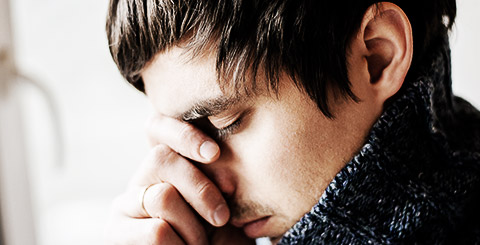
Case study
Hung over
You are on the early morning shift with your colleague Kent who tells you he has had a late night and is feeling a little seedy. You and Kent are responsible for setting up the outdoor area. You are required to set up A-frames, a portable tunnel, stepping blocks, walking boards and balance beams to create an obstacle course. Kent puts out the sand play equipment and then sits down. You tell him you are waiting for him to help you with the obstacle course equipment. He says he has a headache and says: “Just drag it out, it’s not that heavy.”
Read the above scenario and answer the following questions. You can check your answers by clicking on the 'Answer' button.
- Keeping in mind WHS procedures, how should you respond?
Tell Kent that you are not moving the equipment without assistance – you do not want to risk injuring yourself.
- Explain how responsibilities in relation to WHS were breached.
Kent did not present fit for work. Kent’s suggestion that you drag the equipment is inappropriate as he is not following the procedure and is suggesting an action that may result in injury to others.
Workplace inspections are scheduled or planned events where the workplace, or part of it, is inspected to identify existing or potential hazards. By taking a proactive approach, you can help in this process by identifying and reporting any potential hazards before they cause anyone harm.
Inspections should be conducted on a regular schedule. They can also be conducted, however, as part of an incident investigation or when equipment, processes or procedures are changed.
Inspections should include the use of a checklist that has been developed for a specific area to ensure a systematic, thorough evaluation of all areas that may present a risk. Items on a checklist may include:
- The inspection of particular equipment
- The evaluation of an environment including noise, vibration, lighting, temperature and ventilation
- Work processes and procedures, including how a task is performed, by whom and how equipment is used
- Housekeeping standards
Inspections should also be conducted when working offsite such as when your role requires you to visit clients in their home. An inspection like this might entail checking access and exit points, the presence of pets or other people or tripping hazards. These factors ensuring safety should be evaluated to minimise potential harm to yourself and others.
Examples of Inspections that an education and care service may complete:
- Open and Close Checklist
- Outdoor and Environment Checklist
- Equipment audit checklist
- Quality Improvement Plan or Self Assessment Tool
- Nappy Change Checklist
- Risk Assessments
- Excursion Risk Assessment
Jump onto the Little.Ly Intranet to check out some examples of the various checklists that a service may use.
Assessors may observe children demonstrating a sense of belonging and comfort in their environment by recognising and communicating their bodily needs and seeking comfort and assistance from educators when required (Early Years Learning Framework, p. 32):
Each child’s wellbeing and comfort is provided for, including appropriate opportunities to meet each child’s need for sleep, rest and relaxation..
Observe Wellbeing and Comfort - Element 2.1.1 National Quality Standard and Assessment and Rating | National Quality Standard 150:
- being supplied with clean, appropriate spare clothes when they need them and knowing where they can access them independently
- who do not require sleep or rest being given choice and opportunities to engage in quiet play experiences
- being supported sensitively and positively when they are learning to use the toilet
- being provided with and accessing comfortable spaces away from the main activity areas for relaxation and quiet activity.
- children’s needs for privacy during toileting and/or dressing and undressing times being respected and facilitated
- children’s and families’ individual clothing needs and preferences being met to promote children’s comfort, safety and protection within the scope of the service’s requirements for children’s health and safety
- sleep and rest practices that are consistent with current views about children’s health, safety and welfare and that meet children’s individual needs
- physical spaces being made available for children to engage in rest and quiet experiences.
Educators:
- showing awareness of children’s comfort and avoiding overcrowding when children are grouped for rest and sleep
- providing a range of active and restful experiences throughout the program and supporting children’s preferences for participation
- relaxed, positive nappy-changing and toileting routines that are adapted to meet the individual child’s routines
Read the following statements and indicate whether the individual statements are True or False.
Regulatory Authority
Monitoring is a proactive way of assessing and influencing compliance with the National Law and Regulations. Monitoring activities can provide a strong incentive for providers to comply with their regulatory obligations and to improve the quality of education and care at their services. Monitoring is a compliance tool regulatory authorities may apply to an individual person, a single service or service type as part of deciding whether further regulatory action is needed. There are several forms of monitoring activities, set out in the table below:
| Type | Description | Benefits |
|---|---|---|
| Targeted campaigns | Monitoring for a specific compliance issue, location or service type. | Encourages providers and others to ensure they are complying with a specific issues of concern to the regulatory authority. Focuses the regulatory authority's resources on addressing a specific problem. |
| Assessment and rating | The process of assessing and rating a service against the NQS, including by conducting a service visit, | Encourages continuous improvement by engaging the approved provider and the service in a process of self-evaluation, as well as providing a detailed report of their performance against the NQS. |
| Unscheduled visits | Visiting services without prior notice. | Encourages providers and other to comply with their obligations at all times. Unscheduled visits are particularly useful when there is reason to believe the provider may be non-compliant and misrepresenting its self-reported data, or is likely to destroy evidence if an inspection is announced. |
| Scheduled visits | Visiting with prior notice | Encourages providers and others to comply with their obligations and provides preparation time for compliance visits, for example, ensuring certain paperwork is readily available or particular staff members are present. |
At times an Authorised Officer may visit the service to complete a Monitoring and Compliance visit. In these visits, the authorised officer will go and have a tour of the service to 'Observe' practice, see what the service is doing, and see how the service/ environment is. They may go and ask questions to educators to 'Discuss' and they would talk to the person in charge and ask questions relating to their checklist. Lastly, they would view different documents and evidence to 'Sight' information to ensure the service is compliant and adhering to the National Law and Regulations.
At other times the Authorised Officer might be completing an Assessment and Rating. This is where they will be assessing the service against the 7 Quality Standards and the National Law and Regulations. These visits will be a lot longer and can span across 1 to 2 days. Similar to Monitoring and Compliance visits, the Authorised Officer will utilize the Observe, Discuss and Sight techniques to collect evidence. In the Assessment and Rating they will pay close attention to some of the following areas:
- The environment is safe and clean
- The educators follow the services policies and procedures
- Educators are aware of the Child Protection requirements and in some cases will ask staff their role as mandatory reporters and their understanding of services policy and procedure
- Emergency rehearsals are completed every 3 months
- Incident and Illness forms are completed regularly and that the service has notified the regulatory authority for any cases that are necessary
- Sighting children's risk management forms
- Observing educators supervising children
- There is space in the service for children to access sleep, rest and relaxation
- Service menu and food provided
- Risk Assessments for potential emergencies and areas within the service
Plus so much more. For more information relating to authorised officers and the powers they have, check out the information in Chapter 5, Regulatory Powers in the Guide to the NQF.
Legislation in WHS requires that employers consult and cooperate with workers regarding matters that affect their health and safety in the workplace.
This includes:
- Determining what consultation methods will be used (for example, a WHS committee or WHS representatives)
- Consulting with workers regarding matters that affect their work tasks
- Consulting with workers regarding putting in place measures to respond to workplace incidents and accidents
- Consulting with workers regarding modifying worker amenities (for example, updates to kitchen and bathroom facilities)
Consultation is a two-way process where workers can:
- Talk with their employer or their representative (for example, a supervisor or team leader) about how work tasks are performed and how safety is managed
- Listen to the employer representative concerns and raise their own concerns
- Share views and information
Consultation provides workers with an opportunity to participate in the management of safety within their work environment by providing them with information about an issue and giving opportunities to provide feedback.
Consultation and Representation Methods

An organisation’s consultation and representation methods are determined by its staff. Most worker groups choose to either elect a health and safety representative to represent them on WHS issues or choose to establish a WHS committee where management and workers meet to discuss WHS issues.
There are several ways in which you may be able to raise concerns to be addressed by representatives or committees.
Some examples are listed below:
- Informal meetings
- If you have a supervisor or a health and safety representative, you can ask them when they are available and address your concerns with them
- Email
- You can email your concerns to your WHS representative or committee
- A toolbox talk
- You can have an informal meeting about the safety of the organisation with other workers.
Website
Consultation can be undertaken in a variety of ways. Some examples of different methods can be seen in a selection of video case studies from SafeWork NSW (SafeWork NSW, n.d.).
As well for consultation on Work Health and Safety requirements in Early Childhood, you can check a variety of sources to ensure that your service is compliant and up to date. These may include:
- Talking with your Regulatory Authority.
- The Regulatory Authority although is there to govern and regulate the sector, they are also there to help, assist, guide you and instruct you on ways to ensure you are compliant. All regulatory authorities have an information and inquiry line for you to contact.
- Regulatory bodies like ACECQA.
- ACECQA's role is to help educate and work with the sector and develop resources to assist services. An example of resources to assist services is the QIP and the Self Assessment document. As well newsletters and updates are distributed to assist the sector with changes that are occurring.
- The National Law and Regulations
- Guide to the NQF
- Peak Bodies like ECA, NOSHA, FDC Association
Use the following questions to check your knowledge. You can check your answers by clicking on the 'Answer' button.
Q1. Housekeeping standards in the workplace only apply to cleaning staff. Is this statement true or false?
Q2. How should consultation methods be determined in a workplace?
Contributions may include:
- Completing daily safety sheets and records
- Completing risk assessments and assessing areas of the service
- Completing Emergency drills and rehearsals
- Contributing to the development and implementation of service policies and procedures
- Reviewing of service policies and procedures
Q3. List four points that could appear on a workplace inspection checklist in your workplace or in a workplace in which you are familiar.
- Whether there are any tripping hazards
- Whether fire / emergency exits are accessible
- Lighting
- Whether any equipment or furniture is broken or damaged
- Whether any biological or chemical hazards are being adequately controlled, ie. locked in cupboard, removed to safe disposal area regularly.
- Whether PPE is readily available.
- Whether manual handling risks are being appropriately managed.
Q4. When should workplace inspections be undertaken?
- On a regular basis
- When investigating an incident or injury
- When requested by staff
- When changing procedures or equipment
Q5. List four common indicators and symptoms of stress.
- Disturbed sleep patterns
- Feelings of anxiety
- Loss of appetite
- Aggression or irritability
- Loss of interest in things
- Heart palpitations
- Muscle tension
- Depression
